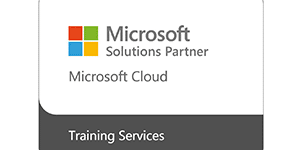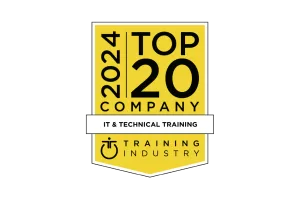Overview
Copilot for Microsoft 365 for Administrators
This Microsoft Copilot course begins by examining the Microsoft Copilot for Microsoft 365 design. Its main focus, however, is on the security and compliance features that administrators must configure in their Microsoft 365 tenant to protect their company’s organizational data before they implement Copilot for Microsoft 365.
Join our exclusive FREE one-day Microsoft Copilot 365 event on the 22nd November 2024
Empower Your Career with Microsoft AI Skills! Join our hands-on courses to build the expertise today’s industries demand. Master AI applications and position yourself as a leader in the digital world.
Check it out – Microsoft Lead The Era of AI
Skills Covered
- Examine the Copilot for Microsoft 365 design
- Implement Copilot for Microsoft 365
- Examine data security and compliance in Copilot for Microsoft 365
- Manage secure user access in Microsoft 365
- Manage roles and role groups in Microsoft 365
- Explore threat intelligence in Microsoft Defender XDR
- Implement data classification of sensitive information
- Explore sensitivity labels
- Implement sensitivity labels
Who Should Attend
This course is designed for administrators, Microsoft 365 administrators, or persons aspiring to the Microsoft 365 Administrator role who’ve completed at least one of the Microsoft 365 role-based administrator certification paths.
Course Curriculum
Prerequisites
There are no prerequisites required to attend this course.
Download Course Syllabus
Course Modules
This module examines the Microsoft Copilot for Microsoft 365 design, how it works, its service and tenant logical architecture, and how you can extend it using Microsoft Graph connectors.
Learning objectives
By the end of this module, you should be able to:
- Describe the prerequisites for Copilot for Microsoft 365.
- Explain how Copilot for Microsoft 365 works.
- Understand the Copilot for Microsoft 365 service and tenant logical architecture.
- Describe how to extend Copilot for Microsoft 365 using Microsoft Graph connectors.
Prerequisites
None
This module examines the key tasks that administrators must complete when implementing Microsoft Copilot for Microsoft 365, such as completing prerequisites, preparing data for searches, and assigning Copilot for Microsoft 365 licenses.
Learning objectives
By the end of this module, you should be able to:
- Identify the prerequisites for Copilot for Microsoft 365.
- Prepare your data for Copilot for Microsoft 365 searches.
- Assign your Copilot for Microsoft 365 licenses.
- Identify Microsoft 365 security features that control oversharing of data in Copilot for Microsoft 365.
- Drive adoption by creating a Copilot Center of Excellence.
This module examines how Microsoft Copilot for Microsoft 365 adheres to existing privacy and compliance obligations, how it ensures data residency and compliance boundary, and how it protects sensitive business data.
Learning objectives
By the end of this module, you should be able to:
- Describe how Copilot for Microsoft 365 uses proprietary business data.
- Understand how Copilot for Microsoft 365 protects sensitive business data.
- Describe how Copilot for Microsoft 365 uses Microsoft 365 isolation and access controls.
- Understand how Copilot for Microsoft 365 meets regulatory compliance mandates.
This module examines the various features provided in the Microsoft 365 ecosystem for securing user access, such as Conditional Access policies, multifactor authentication, self-service password management, Smart Lockout policies, and security defaults.
Learning objectives
By the end of this module, you should be able to:
- Manage user passwords.
- Create Conditional Access policies.
- Enable security defaults.
- Describe pass-through authentication.
- Enable multifactor authentication.
- Describe self-service password management.
- Implement Microsoft Entra Smart Lockout.
Prerequisites
None
This module examines the use of roles and role groups in the Microsoft 365 permission model, including role management, best practices when configuring admin roles, delegating roles, and elevating privileges.
Learning objectives
By the end of this module, you should be able to:
- Understand how roles are used in the Microsoft 365 ecosystem.
- Describe the Azure role-based access control permission model used in Microsoft 365.
- Identify the key tasks assigned to the common Microsoft 365 admin roles.
- Identify best practices when configuring admin roles.
- Delegate admin roles to partners.
- Implement role groups in Microsoft 365.
- Manage permissions using administrative units in Microsoft Entra ID.
- Elevate privileges to access admin centers by using Microsoft Entra ID Privileged Identity Management.
Prerequisites
None
This module examines how Microsoft 365 Threat Intelligence provides admins with evidence-based knowledge and actionable advice that can be used to make informed decisions about protecting and responding to cyber-attacks against their tenants.
Learning objectives
By the end of this module, you should be able to:
- Describe how threat intelligence in Microsoft 365 is powered by the Microsoft Intelligent Security Graph.
- Create alerts that can identify malicious or suspicious events.
- Understand how the automated investigation and response process works in Microsoft Defender XDR.
- Describe how threat hunting enables security operators to identify cybersecurity threats.
- Describe how Advanced hunting in Microsoft Defender XDR proactively inspects events in your network to locate threat indicators and entities.
Prerequisites
None
This module introduces you to data classification in Microsoft 365, including how to create and train classifiers, view sensitive data using Content explorer and Activity explorer, and implement Document Fingerprinting.
Learning objectives
By the end of this module, you should be able to:
- Explain the benefits and pain points of creating a data classification framework.
- Identify how data classification of sensitive items is handled in Microsoft 365.
- Understand how Microsoft 365 uses trainable classifiers to protect sensitive data.
- Create and then retrain custom trainable classifiers.
- Analyze the results of your data classification efforts in Content explorer and Activity explorer.
- Implement Document Fingerprinting to protect sensitive information being sent through Exchange Online.
Prerequisites
None
This module examines how sensitivity labels from the Microsoft Information Protection solution let you classify and protect your organization’s data, while making sure that user productivity and collaboration isn’t hindered.
Learning objectives
By the end of this module, you should be able to:
- Describe how sensitivity labels let you classify and protect your organization’s data
- Identify the common reasons why organizations use sensitivity labels
- Explain what a sensitivity label is and what they can do for an organization
- Configure a sensitivity label’s scope
- Explain why the order of sensitivity labels in your admin center is important
- Describe what label policies can do
Prerequisites
None
This module examines the process for implementing sensitivity labels, including applying proper administrative permissions, determining a deployment strategy, creating, configuring, and publishing labels, and removing and deleting labels.
Learning objectives
By the end of this module, you should be able to:
- Describe the overall process to create, configure, and publish sensitivity labels
- Identify the administrative permissions that must be assigned to compliance team members to implement sensitivity labels
- Develop a data classification framework that provides the foundation for your sensitivity labels
- Create and configure sensitivity labels
- Publish sensitivity labels by creating a label policy
- Identify the differences between removing and deleting sensitivity labels
Prerequisites
None
Request More Information
Training Options
- ILT: Instructor-Led Training
- VILT: Virtual Instructor-Led Training
RM1,200.00Enroll Now
RM1,200.00Enroll Now
RM1,200.00Enroll Now
RM1,200.00Enroll Now
RM1,200.00Enroll Now
Exam & Certification
This course is not associated with any Certification.
Training & Certification Guide
MS-4005: Craft effective prompts for Microsoft Copilot for Microsoft 365
Discover ways to craft effective and contextual prompts for Microsoft Copilot for Microsoft 365 that create, simplify, transform, and compile content across Microsoft 365 applications. Learn the importance of providing a clear goal, context, source, and expectation in your prompt for the best results.
MS-4007: Copilot for Microsoft 365 User Enablement Specialist
Learn how to drive adoption of Microsoft Copilot for Microsoft 365 using the user enablement framework to create and implement a robust adoption plan.
MD-102T00: Microsoft 365 Endpoint Administrator
In this Microsoft 365 Endpoint Administrator course, students will learn to plan and execute an endpoint deployment strategy using contemporary deployment techniques and implementing update strategies.
MS-102T00: Microsoft 365 Administrator
This Microsoft 365 Administrator course covers the following key elements of Microsoft 365 administration: Microsoft 365 tenant management, Microsoft 365 identity synchronization, and Microsoft 365 security and compliance.







